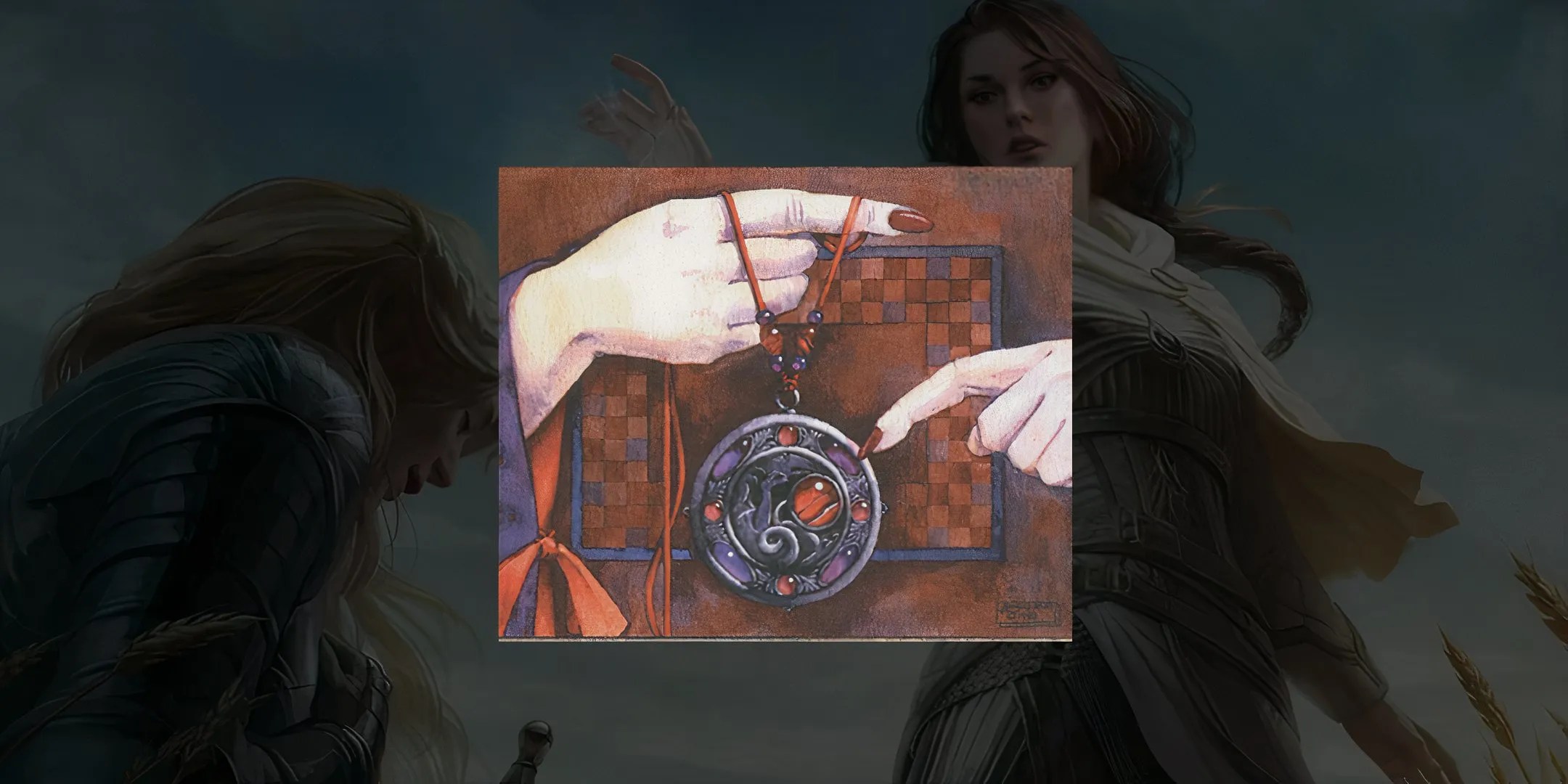Summary
Healers such as Clerics remain a constant in adventuring parties due to their invaluable healing abilities. InDungeons & Dragons(D&D)Fifth Edition (5e), Clerics remain a popular class to pick for players who want to have healers with a diverse set of skills.
In 5e, gone are the days when Clerics stayed behind tanky allies to prioritize healing the party. A lot of players are now finding more ways to make their Clerics more versatile characters in their campaigns. Clerics who want to deal just as much damage as they heal can refer to this guide to thebest Cleric weapons inD&D 5e.

Updated on Jul 31, 2025, by Rhenn Taguiam:With the newPlayer’s Handbookrevamping many ofDungeon’s & Dragons’ mechanics and gameplay, fans of the acclaimed TTRPG might find themselves in awe at how their characters have evolved and changed to become more flexible versions. Such is the case of the Cleric, with new Smite-like abilities, more powerful healing, and even a pseudo-Wish as part of their higher-level Spell List. However, before players create their Clerics for their new campaigns, they might be interested in taking a look at some of the more viable weapons for Clerics players should watch out for in their stories. For Clerics in campaigns involving the gods, interesting weapons include the bident of the God of the Sea, the greataxe of the All-Shaper, the warhammer of the God of the Forge, and the spea of the Sun God.
-

Effects
Forego an Attack Roll to get a 10. Once per dawn.
Combat can be one ofthe more overwhelming aspects ofD&Dgameplay, especially when players have to roll a lot of dice and calculate their bonuses. Thankfully, players who want to focus on their Clerics’ Spellcasting capabilities can rely onClockwork Amuletfor a rather quick exit. While not necessarily a weapon, it can give players a nifty escape for their rolls: once per dawn, their Clockwork Amulet can force their Attack Roll to get a 10 instead of having to actually roll for the result.

At first glance, this move might seem impractical for players. However, the Clockwork Amulet is a nifty option to skip having to risk missing Attacks against fodder-like minions. Players can also rely on their Spellcasting Ability Modifier to secure hits with more powerful attacks such as upcasted Inflict Wounds and Guiding Bolt. Should Dungeon Masters allow it, the Clockwork Amulet not requiring Attunement can theoretically allow players to rotate through a number of them per day to score multiple guaranteed 10s.
Clockwork Amulet: How Does It Fit The Divine Agent?
While more compatible as a technical tool than a flavor piece, it’s still possible to transform the Clockwork Amulet into the latter with the right story. A Dungeon Master can state that the Clockwork Amulet looks like an ordinary mechanical trinket when in reality the Amulet is a holy relic that facilitates “divine intervention” to believers - explaining how the Cleric can easily tear through mobs.
Get Advantage on Initiative Rolls and Perception (WIS) Checks

ACleric makes the most impact on theirD&Dgameplaywhenever they’re able to dish out their Channel Domain and an arsenal of Spells - traits that are sometimes more beneficial compared to having weapons alone. This is where theSentinel Shieldshines, as it provides its wielder with an Advantage on both Initiative Rolls and Perception (WIS) Checks - essentially allowing Clerics to be more observant on the battlefield. The Sentinel Shield is a sophisticated piece of armor that could be found in blacksmiths of major cities, or as staple equipment of higher-ranking soldiers.
While the Sentinel Shield isn’t a weapon in itself, being a Shield not only endows the Cleric with base +2 AC but also becomes a decent pair with other one-handed weapons. Not to mention, having Shield Master (Feat) allows players to use their Bonus Action to Shove a creature within a 5-foot radius, add the AC to a DEX Save against a Spell, or use a Reaction to take no damage against a half-damage DEX Save.

Sentinel Shield: How Does It Fit The Divine Agent?
A party without the traditional Paladin can rely on the Cleric to become the team’s tank, essentially allowing the Sentinel Shield to transform the Spellcaster into a reliable frontline combatant. Likewise, a party with a lot of melee warriors might be surprised to see their Cleric prop up the Sentinel Shield to rush to their aid - braving attacks if it meant being able to lend a healing hand to allies.
Rare (Requires Attunement by a Cleric, Druid, or Wizard)

+1 to Attack and Damage Rolls, +1d8 Fire Damage
Solar Focus:Use as a Spellcasting Focus, can reroll damage dice up to Proficiency Bonus when using a Spell Slot to deal Fire and Radiant Damage using Spells. The new rolls must be used. Available once per dawn.

Sunny Glow:Use a Bonus Action to make the staff glow with sunlight. It sheds 15ft/15ft Bright/Dim Light.
Players interested in adding a more radiant flair totheir Cleric’s arsenalcan do it rather literally, courtesy of theSun Staff. It’s said that veins of sunstone are wrapped around the staff, allowing its caster to use sunlight to empower their Spells. This staff being connected with radiance means Dungeon Masters can include this weapon as a sacred armament in a temple dedicated to sun deities such as Pelor.

When equipped, the Sun Staff already grants +1 Bonus to Attack and Damage Rolls with an additional 1d8 Fire Damage whenever its attacks hit. The Sun Staff can also be used as a Spellcasting Focus, which transforms it into a Solar Focus. Once per dawn, this effect allows players to reroll Damage Dice equal to their Proficiency Bonus but they have to use the new rolls.
Sun Staff: How Does It Fit The Divine Agent?
The sunlight-themed aesthetic of the Sun Staff makes it perfect for a traditional Cleric whose allegiance falls on the Lawful Good Alignment. Even if a player takes their Cleric down a darker path, a Dungeon Master can retain the Sun Staff’s base bonuses but can have its overall appearance grow darker and colder the more the Cleric transitions into another Alignment, giving it a more flavorful appeal.
+1, 2, 3

+1, 2, 3 to Attack and Damage Rolls
Unlike other armaments inDungeons & Dragons, theWeapon Plusseries (Weapon +1, +2, +3) works under the assumption that even a “generic” weapon can be made magical without being necessarily named. From a roleplaying perspective, these weapons are magically enhanced to be able to attack more monstrous threats that ordinary weapons aren’t able to do. Technically speaking, they provide +1 and up to +3 to both Attack and Damage Rolls.

Due to the magical nature of these Weapon Plus armaments, Clerics might think they can only get them from special sources. However, by virtue of their base weapons being mundane, it’s theoretically possible to ask the Dungeon Master for such a weapon when they visit most blacksmiths in most cities. More powerful Weapon Plus variations could come from more popular blacksmiths, craftsmen, and alchemists.
Weapon Plus: How Does It Fit The Divine Agent?
At the end of the day, the Weapon Plus series only works depending on the direct bonus a Cleric gets. All of the Weapon Plus options are barely enough to cross over Cantrip territory, making Light Crossbows more reliable alternatives. However, Clerics who insist on using melee weapons for their combat could potentially benefit from these armaments, especially if the Dungeon Master provides higher-grade options for lesser requirements.
Hailing fromThe Book of Many Things, a Cleric can use theRod of Hellish Flamesto cement their control over holy fire to burn heretics, unbelievers, and forces of evil into oblivion. While not necessarily a weapon in a traditional sense fromaD&Dcampaignperspective, the aggressive nature of the Rod can allow Clerics to depend on it as a once-per-day hyper-aggressive tool for powerful burst damage. Searing Rebuke casts 4th-Level Hellish Rebuke for as much as 5d10 Fire Damage, while its daily Surge of Brimstone can cap the damage of any Fire and Necrotic Spell they cast.
The nature of the Rod of Hellish Flames as an infernal-sounding item may imply storage inside a temple dedicated to fiery worship. This doesn’t necessarily have to be an evil-aligned temple, but perhaps a temple aligned to a war god, a fiery being, or even a place of rest for zealous worshippers.
Rod Of Hellish Flames: How Does It Fit The Divine Agent?
The key advantage of using the Rod of Hellish Flames has less to do with its potential as a weapon but more to do with how it benefits Clerics who can use Fire and Necrotic Damage. Granted, its once-a-day use can make the Rod of Hellish Flames more of a one-time burst weapon every encounter. However, the Rod’s technical terminology states there’s no need to roll damage to maximize its effect. As such, it suits continuous and spammable effects, such as those of Spirit Guardians.
It’s not all the time thatclasses other than Wizards, Warlocks, Bards, and Rangersget companions. Thanks to theStaff of the Python, a Cleric also has the opportunity to get a pet of their own - a snake. Should players use the staff’s command word, the Staff of the Python transforms into a Giant Constrictor Snake capable of incapacitating opponents. On the player’s turn, they can mentally command the snake to move or perform actions such as attacking - although when it dies, it transforms back into a staff and is destroyed.
As the weapon is nature-aligned, the Staff of the Python may be located in forests or groves, as well as forest-aligned places of worship. An abandoned monastery or even temple could be the home to the Staff of the Python. Likewise, a trip to the forest could have the Giant Constrictor Snake as its natural inhabitant, with the Staff having a unique origin story that players can find out later in the campaign.
Staff Of The Python: How Does It Fit The Divine Agent?
Serving more as a utility than a direct combat weapon, the Staff of the Python can act as a nifty companion provided it doesn’t die in direct conflict. Players can transform it into a CR 2 Giant Constrictor Snake to incapacitate targets, especially if they have low Acrobatics and Athletic. Moreover, its Blindsight property lets the snake become a useful scout in dark conditions. Since there’s a risk of losing the staff forever when the snake dies, it’s advisable to turn it back into a staff when it’s in danger.
It’s not always that a Cleric can obtain a transforming staff in theirDungeons & Dragonsgameplay, but this is exactly what theStaff of the Adderdoes for them. When acquired, they can make the head of the staff transform into a snake for a minute. The head has a 5-foot reach and can attack for 3d6 Poison Damage. As a partially living object, the head gets AC 15 and 20 HP, and the staff is destroyed once opponents also destroy the snake.
The unique properties of the Staff of the Adder can make its acquisition attached to nature-inclined temples or even homes of spellcasters thataD&Dplayer’s charactercan meet. The transforming quality of the staff can make it an entertaining tool, making it possible for the staff to be stored in caravans and even purchased in entertainment shops in larger campaign cities.
Staff Of The Adder: How Does It Fit The Divine Agent?
If the Cleric doesn’t mind playing with a bit of technicality with their Strength and the properties of the Staff, then the Staff of the Adder can be a decent addition to a melee Cleric’s repertoire. Assuming its description fits a Weapon Attack, then Divine Strike can likely work in conjunction with releasing the snake. This technically allows the player to deal 3d6 Poison Damage - a kind of damage reserved usually for more powerful Spells or those from Martial classes. If enemies decide to attack the snake, then recalling it and activating it again for two Bonus Actions can get the players up to speed.
1d8 Piercing, Loading, Range (80/320), Two-Handed
While the Mace remains the thematic weapon of a Cleric, theLight Crossbowremains a decent alternative, especially for players who want to outlast it from a long-range standpoint. Being a healer first and foremost, the Cleric can protect themselves from afar without having to rely on their Spells is a must for practical orfirst-timeDungeons & Dragonsplayers.
In turn, lower-level Clerics might consider grabbing a Light Crossbow for their primary weapon of choice. This is primarily because Light Crossbows may deal more damage than basic damaging Cantrips, leaving Clerics with more room for utility Cantrips to benefit the team. Not to mention, the common nature of the Light Crossbow makes it an often-available weapon in most stores.
Light Crossbow: How Does It Fit The Divine Agent?
Given the Monk’s more melee-oriented aggressive toolkit, the Light Crossbow makes for the equivalent of a sidearm. Being able to deal 1d8 Piercing over a large distance immediately makes the Light Crossobw a more reliable Cantrip compared to the Cleric’s spellcasting variants, making for a more risk-free ranged option while Clerics focus on buffing or healing allies.
1d6 Piercing, Thrown (30/120)
Players who are aiming to gear up their Cleric with powerful swords but refuse to ascribe to the stereotypical Mace might want a similarly useful weapon without resorting to the Light Crossbow. This is where theJavelincomes in.
Boasting a similar damage toolkit as the Light Crossbow, the Javelin remains a decent alternativeprimarily due to itsD&Ddamage attribute Strength requirementversus the Light Crossbow’s Dexterity-based damage. On top of this convenience, the Javelin is a common enough armament that most weapon stores, smiths, and even armories likely have them in stock.
Javelin: How Does It Fit The Divine Agent?
Should the Cleric not have access to the Spear, the Javelin works just fine as a substitute. Due to the lack of the Versatile Property, Clerics immediately lose access to the ability to use this one-handed or two-handed. However, being able to Throw the Javelin gives Clerics access to more range. This option should be allowing them to use the weapon in melee when necessary or even thrust the armament to an opponent.
Clerics with a Mace remain an iconic enough image in almost anyDungeons & Dragonsscenario, but players who love this aesthetic can take the “holy look” a step further withLightbringer. First introduced in the “Lost Mines of Phandelver” adventure, Lightbringer is a Mace created for a Cleric worshiping Lathander, the god of dawn. In turn, its design features a head shaped like a sunburst, with the weapon able to glow like a torch upon command.
Perhaps more interesting is that the weapon itself is a +1 Mace, granting a small bonus to both Attack and Damage Rolls. Not only that, but it also deals an extra 1d6 of Radiant damage against undead creatures. Given its nature as a Legendary Artifact, Lightbringer is often found in hidden temples and potentially locked away in vaults located in places sacred to the divine and holy. IfDungeon Masters have a canon deitylike Lathander as a worshipped god in their game, the weapon may be located in a temple dedicated to him.
Lightbringer: How Does It Fit The Divine Agent?
While essentially acting as a Mace +1, the Lightbringer’s extra 1d6 Radiant Damage against undead creatures acts as a miniature Divine Smite against these enemy types. Even without the +1d6 against the undead, its base 1d6+1 Damage in melee makes for a decent weapon upgrade. Considering how often parties will likely fight undead foes, the Lightbringer is a must-have Mace even in emergencies.